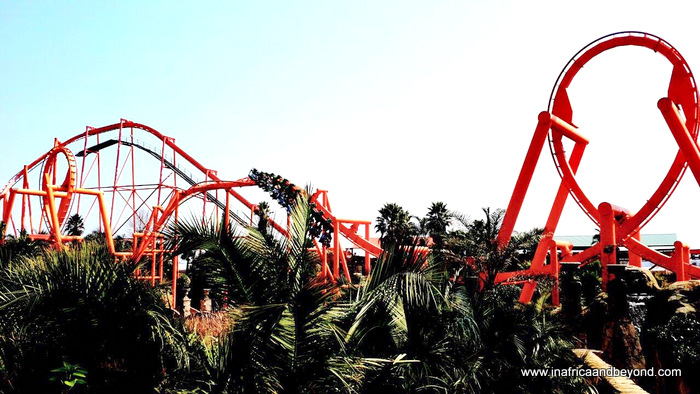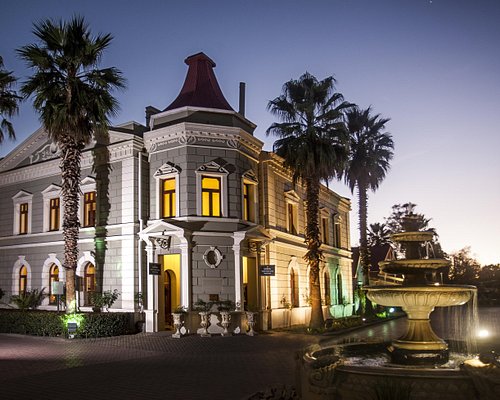Some Known Facts About Johannesburg North Attractions.
Johannesburg North Attractions Things To Know Before You Get This
Table of ContentsRumored Buzz on Johannesburg North AttractionsAn Unbiased View of Johannesburg North AttractionsIndicators on Johannesburg North Attractions You Need To KnowGetting My Johannesburg North Attractions To WorkJohannesburg North Attractions for DummiesJohannesburg North Attractions Fundamentals Explained
The city expanded on the side of the Witwatersrand Main Reef, a below ground stratum of gold-bearing quartz-silica corporation that arcs for hundreds of miles below the Highveld - Johannesburg North attractions. Most of the gold mines in the city ceased procedure in the 1970s, however in its day the Witwatersrand gold industry accounted for even more than 40 percent of the world's annual gold manufacturing.Johannesburg has a pleasant climate. The city enjoys concerning eight hours of sunshine per day in both winter season and summer season.
What rain the city obtains falls almost solely in the summertime, usually in amazing late-afternoon electrical tornados. Air air pollution presents a substantial problem, particularly in the cold weather, when thermal inversions hamper the westward flow of air from the Indian Ocean. Air pollution is most severe in the densely cleared up Black towns on the city's perimeter, where many residents still count on coal for gas.

Get This Report on Johannesburg North Attractions
The balance of the city is occupied by whites. Accommodation varies in personality and high quality. Soweto is infamous for its limitless rows of municipally constructed, two-room matchbox homes, yet it also has a couple of prosperous enclaves in addition to teeming squatter camps, where 10s of thousands live without water, electrical power, or cleanliness centers.
Physical development, although somewhat restricted by transportation, continued swiftly as migration to South Africa, and Johannesburg in particular, enhanced dramatically.
The majority of poor residential areas were combined, with bad blacks and whites cohabiting, although the rich suburbs were normally scheduled for whites. This changed with the political election of the National Event in the 1948 political elections, that began to formalise the system referred to as racism. Apartheid officially marked which suburban areas each race might live in under the Team Locations Act.
The previous system of eleven phoned number areas was reorganised in 2006. Marshalltown, as seen from the top of the Carlton Centre. The M1 and M2 run behind the structures, and the southern residential areas prolong past the freeway limit. The internal city of Johannesburg lies within the city's Area F. The estimated populace of the area is 200,000, [] The number of people living in the internal city on an informal basis is unidentified, as many are unlawful immigrants. Most higher-income homeowners and white individuals have relocated to the north suburbs and have actually read this article been changed by lower-income black people. The joblessness, education, and age accounts of the location are all unknown, as a result of the trouble of getting reputable information regarding the location.
3 Easy Facts About Johannesburg North Attractions Shown
Yeoville and Bellevue have a mix of apartment or condo buildings and solitary property systems on small great deals. The region is located on a hilly divide that runs from east to west.

Johannesburg Stadium, a training ground for both the Golden Lions and Orlando Pirates, is adjacent. The eastern suburban areas of Johannesburg lie in the city's 7th [] and 9th [] areas. The location is additionally functionally integrated with East Rand border towns outside of the official limit of Johannesburg, such as Bedfordview and Edenvale (both part of Ekurhuleni Metropolitan Town).
Some Known Details About Johannesburg North Attractions
R. Tambo International Airport). The eastern suburban areas are a few of the oldest areas of Johannesburg, there are huge neighborhoods of Jewish and various other European backgrounds, most of the populace is English talking. There are three fairway along with a variety of protected ridges with viewsites. There are a number of well-developed and up-market home entertainment and purchasing locations in the eastern such as the Eastgate Mall and the see here now Greenstone shopping center.
The area is mainly composed of old "matchbox" houses, or four-room homes built by the government, that were built to provide economical accommodation for black employees during racism. Soweto is an acronym, standing for "South Western Townships". Street after street around is lined with matchboxes; nonetheless, there are a few smaller sized areas where flourishing Sowetans have actually built homes that are extra similar in stature with those in even more affluent suburbs.
Hostels are an additional popular physical feature of Soweto. Originally built to house male migrant employees, numerous have been enhanced as homes for pairs and families. The N1 Western Bypass skirts the eastern limit of Soweto. The residential area was not historically enabled to develop employment centres within the location, so mostly all of its homeowners are commuters to other components of the city.
The 3-Minute Rule for Johannesburg North Attractions
The N1 Western Bypass attaches the north suburban areas with the north-western suburban areas. The residential locations in the northern suburbs are mostly official, with no considerable locations of informal real estate, or housing that does not have a long-term structure. Although this is an established article source area, there is a pattern of land use adjustment from property to commercial, especially along main arterial roads and around well established nodes.
Roads to the eastern and west are less well established, as there are no highways travelling in that instructions. In the direction of the northern boundary of the city, the thickness of development decreases, leaving large locations of untaught land around Midrand.
The Ultimate Guide To Johannesburg North Attractions
The initial residential area to the north of the inner city is Parktown, which is located on a hillside ignoring the internal city and Hillbrow. It has lots of wealthy locals and Edwardian-style estates, along with the Education and learning and Medical universities of the College of the Witwatersrand. The large concrete Charlotte Maxeke Johannesburg Academic Medical Facility controls the skyline of Parktown.